To assign reasonably secure permissions to files and folders/directories, it's common to give files a permission of 644, and directories a 755 permission, since chmod R assigns to both Use sudo, the find command, and a pipemill to chmod as in the following examples To change permission of only files under a specified directory Below is an example syntax of how to use the chmod comamnd chmod OPTION MODE,MODE FILE or chmod OPTION OCTALMODE FILE Options The command line options are switches or flags that determined how the commands are executed or controlled they modify the behavior of the commands they are separated by spaces and followed after the commands The atoi() function only translates decimal, not octal For octal conversion, use strtol() (or, as Chris JesterYoung points out, strtoul() though the valid sizes of file permission modes for Unix all fit within 16 bits, and so will never produce a negative long anyway) with either 0 or 8 as the base Actually, in this context, specifying 8 is best It allows people to write 777 and
/GettyImages-1021092796-ea8c63ee76f84bd5bf98c4222337fbb4.jpg)
How To Use The Chmod Command In Linux
Unix chmod example
Unix chmod example- chmod examples using symbolic mode Symbol are used to assign the permissions u – user , g – group, o – others , a – all to add permission , – to remove permission , = to assign permission r w x is used for read , write,execute , s is used to set the sticky bit; chmod R 777 /www/store The R (or recursive) options make it recursive Or if you want to make all the files in the current directory have all permissions type chmod R 777 / If you need more info about chmod command see File permission




Linux Chmod Command Linux Permissions
Chmod Command Examples 1 To change the file permissions # chmod rx,gx,o=r filetxt 2 To change the file permissions using the octal values # chmod 777 filetxt 3 To see if the changes have been taken affect or not after firing the commandAssign execute permission to user and group in file chmod 664 exampletxt chmod u=rw,g=rw,o=r exampletxt chmod arwx,ux,gx,owx exampletxt chmod 777 (rwxrwxrwx) chmod 777 is used to grant permissions to everyone to read, write, and execute a file While using these permissions is a quick way to overcome a permissionsbased error, it's not a best practice for securing most files and
chmod ux versus chmod x comparison A huge number of tutorials on the internet use chmod ux in their tutorials for demonstration purpose If you actually run chmod ux and compare with chmod x, you should see no difference in most cases The man page of chmod says that` u stands for user g stands for group o stands for others a standsChmod changes the file mode bits of each given file according to mode, which can be either a symbolic representation of changes to make, or an octal number representing the bit pattern for the new mode bits To learn more use our calculator and read the references below at the bottom of this pageExamples chmod ugx file ;
Below are some examples of how to use the chmod command in symbolic mode Give the members of the group permission to read the file, but not to write and execute it chmod g=r filename; Example 1 If you want to give read (4), write (2), and execute (1) permissions to both the user and group, and only read (4) permission to others, you can use localhost@user1$ chmod 774 Example 2 If you want to restrict write permissions to all others except the file's owner, you can use localhost@user1$ chmod 744Chmod x myfile Gives everyone execute permission on myfile chmod ugox myfile Same as the above command, but specifically specifies user, group and other




Best Linux Chmod Command With Examples It Smart Tricks
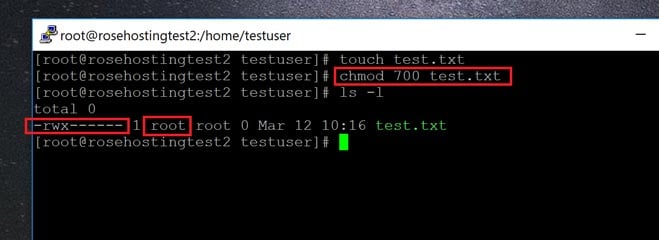



How To Deny File Permissions To Everyone Except Yourself In Linux Linuxhostsupport
PHP chmod 30 examples found These are the top rated real world PHP examples of chmod extracted from open source projects You can rate examples to help us improve the quality of examples Programming Language PHP Method/Function chmod Examples at hotexamplescom 30Write 0=2 w execute 001=1 x Perform chmod recursive with R or recursive If all your files and directories are under one parent directory then you can directly use chmod R to assign the permission recursively The syntax to modify the file and directory permission recursively3 chmod examples Syntax and Options Related Commands chmod stands for change mode, which changes the file or directory mode bits To put it simply, use chmod command to change the file or directory permissions Following is a sample of ls l command output In this, the 9 characters from 2nd to




Restore Executable Permission To Chmod Command In Linux Ostechnix



Using Chmod X Command On Linux And Unix With Examples Systemconf
Examples Deny execute permission to everyone chmod ax file Allow read permission to everyone chmod ar file Make a file readable and writable by the group and others chmod gorw file Make a shell script executable by the user/owner $ chmod ux myscriptsh You can then execute it like this /myscriptsh Examples To Change group ownership In our case I am using group1 as a group in the system To change ownership we will use chown group1 file1txt You can see that the group permissions changed to group1 from root, if you use v option it will report that We just need to add a "" to change groupChmod File NIO Example This example compiles a list of one or more symbolic mode expressions that can change a set of file permissions in a manner similar to the UNIX chmod command The symbolicmodelist parameter is a commaseparated list of expressions where each expression has the following form who One or more of the following
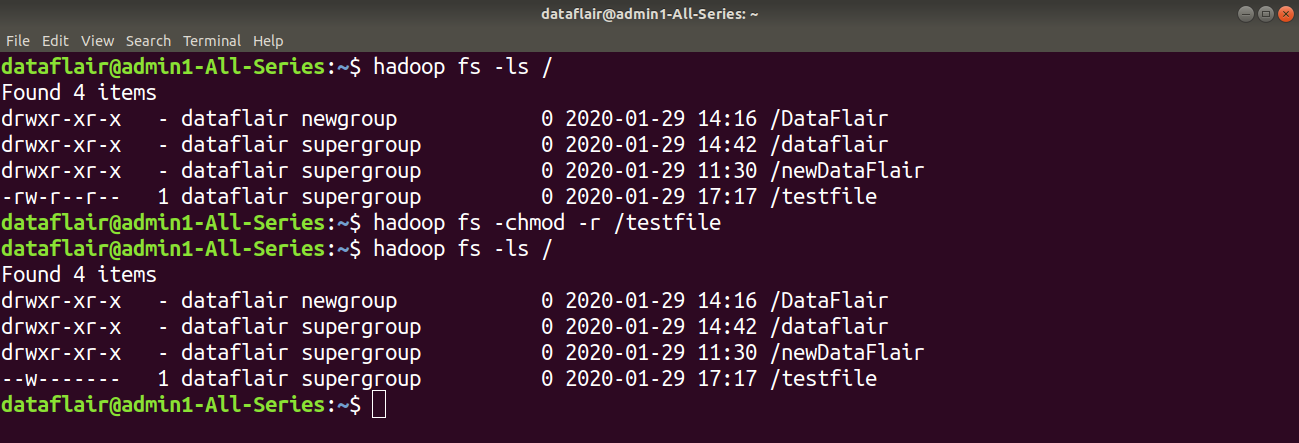



12 Frequently Used Hadoop Hdfs Commands With Examples Usage Dataflair




Linux Chmod Command Linuxfordevices
For example, if we want to set read and write permission for all text files, specify the * txt pattern with chmod command To view the permission of all text file from the current working directory, execute the below commandFor example, consider the following example Now, suppose the task is to add execute permission for owner/user, remove write permission but add execute permission to group, and remove all permissions from others This can be done as follows chmod 750 scriptshDESCRIPTION top This manual page documents the GNU version of chmod chmod changes the file mode bits of each given file according to mode , which can be either a symbolic representation of changes to make, or an octal number representing the bit pattern for the new mode bits
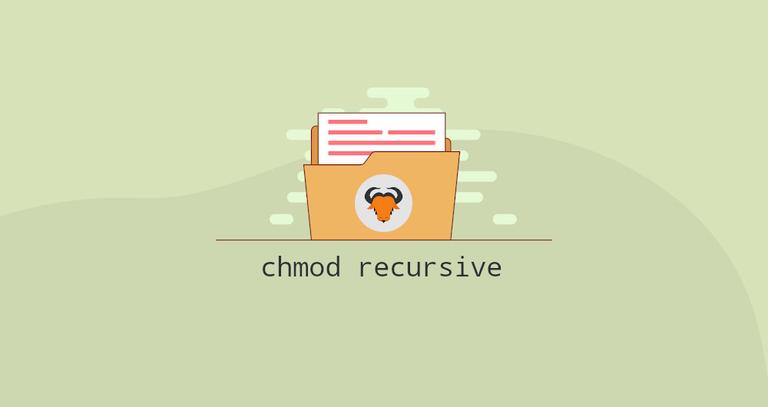



Chmod Command In Linux File Permissions Linuxize




Chown Command In Linux With Examples Geeksforgeeks
ls l new_ filetxt We want the user dave to have read and write permissions and the group and other users to have read permissions only We can do using the following command chmod u=rw,og=r new_filetxt Using the "=" operator means we wipe out any existing permissions and then set the ones specifiedFor example, to add the execute permission for the user to file1 chmod ux file1 To remove the write permission for others for file2 chmod ow file2 You can combine multiple references and modes to set the desired access all at once For example, to explicitly make file3 readable and executable to everyone chmod ugo=rx file3 chmod Read, Write, Execute Permission Calculation The chmod command can be used with both letter permissions or value permissions For example, we can specify the read and write permission with the w and r letters We can also use the digit presentation by summing the read and write values 42 = 6




How To Use The Chmod Command On Linux




Agenda The Linux File System Chapter 4 In
Chmod In Unix and Unixlike operating systems, chmod is the command and system call used to change the access permissions of file system objects ( files and directories) sometimes known as modes It is also used to change special mode flags such as setuid and setgid flags and a 'sticky' bitThe chmod() and fchmod() system calls change a file's mode bits (The file mode consists of the file permission bits plus the set userID, setgroupID, and sticky bits) These system calls differ only in how the file is specified * chmod Examples Using chmod # Below are examples of making changes to permissions chmod ux myfile Gives the user execute permission on myfile;
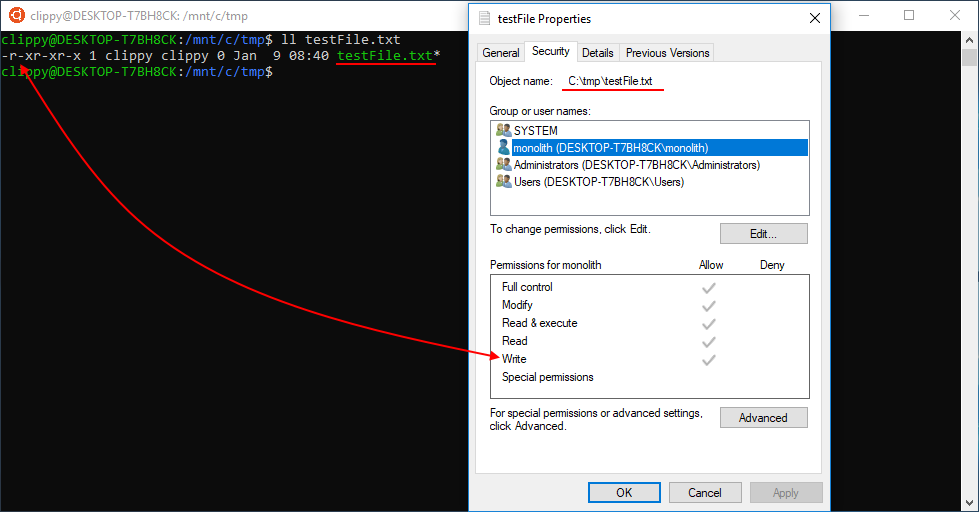



Chmod Chown Wsl Improvements Windows Command Line




Introduction To Linux File Permissions Attributes Chmod Globo Tech
Similarly, you can define the "write by group only" permission with the "0" mode and "write by other only" using the "002" mode Example 4 Setting "execute by owner only" file permission using chmod command In the chmod command, the "1" digit represents the execute modeIf you want to set the "execute by owner only" permission, then execute the belowgivenRecursively remove the write permission for other users chmod R ow dirname Permissions Using Numeric modeThe format of a numeric mode is 'augo' ,A numeric mode is from one to four octal digits (07),to set permission you pass the numbers permission to owner group everyone for example chmod nnn is setting permission n to owner and the second n to group and third n to everyone (n is the numeric mode that we will describe bellow)




How To Copy File Permissions And Ownership To Another File In Linux
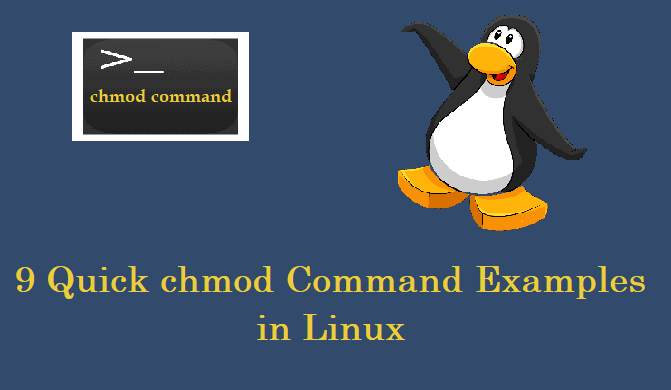



9 Quick Chmod Command Examples In Linux
For example, if you use the recursive chmod command on any directory, the digits will automatically reset to 777 As a result, any user on your system will have the power to delete, create, and modify any file on your directory With the rise of hackers over the years, it may not be advisable to run the chmod command The following chmod command modifies the mock file, exampletxt, so that the owner (user) as well other users (group, other) receive writing and reading rights $ chmod ugorw exampletxt mixed Referencing all the user classes (a) is a possible alternative $ chmod arw exampletxt mixedRemove the execute permission for all users chmod ax filename;



Best Linux Chmod Command With Examples
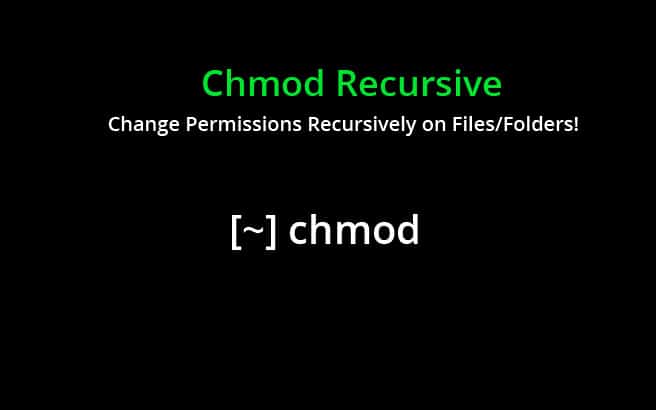



Chmod Recursive Change Permissions Recursively On Files Folders
The chmod command allows you to change the permissions of files using symbolic or numeric mode To recursively operate on all files and directories under a given directory, use the chmod command with the R, ( recursive) option The general syntax to recursively change the file's permissions is as follows chmod R MODE DIRECTORYWhat is the chmod command?Chmod examples in symbolic mode Deny execute permission to everyone $ chmod ax chmodExampleFiletxt Allow read permission to everyone $ chmod ar chmodExampleFiletxt Make a file readable and writable by the group and others $ chmod gorw chmodExampleFiletxt




Chmod Command In Linux With Examples Geeksforgeeks




What Is The Meaning Of Chmod 755 And How To Execute And Verify It
Now, let us see how chmod command can be used to change the access mode of a file Example 1 Let's change the assgn1_clientc permission so that the owner cannot write (w) in the file but can only read it BEFORE rwrwr mik mik assgn1_clientc COMMAND chmod u=r assgn1_clientc AFTER rrwr mik mik assgn1_clientc BeforeSpecifies the new permissions The mode parameter consists of four numbers The first number is always zero The second number specifies permissions for the owner The third number specifies permissions for the owner's user group The fourth number specifies permissions for everybody else Possible values (to set multiple permissions, add up




Permissions In Linux Geeksforgeeks




Chmod Umask Stat Fileperms And File Permissions




Chmod And Chown For Wordpress




Uredno Precnik Argument Chmod Folder Floorartstone It



1




Chmod Example Why Chmod Calculator Is The Best




7 Examples Of Command Chmod On Linux And Explanation




How To Recursively Change File Permissions In Linux Make Tech Easier




How To Use Chmod Command In Linux




Linux Chmod Command Help And Examples
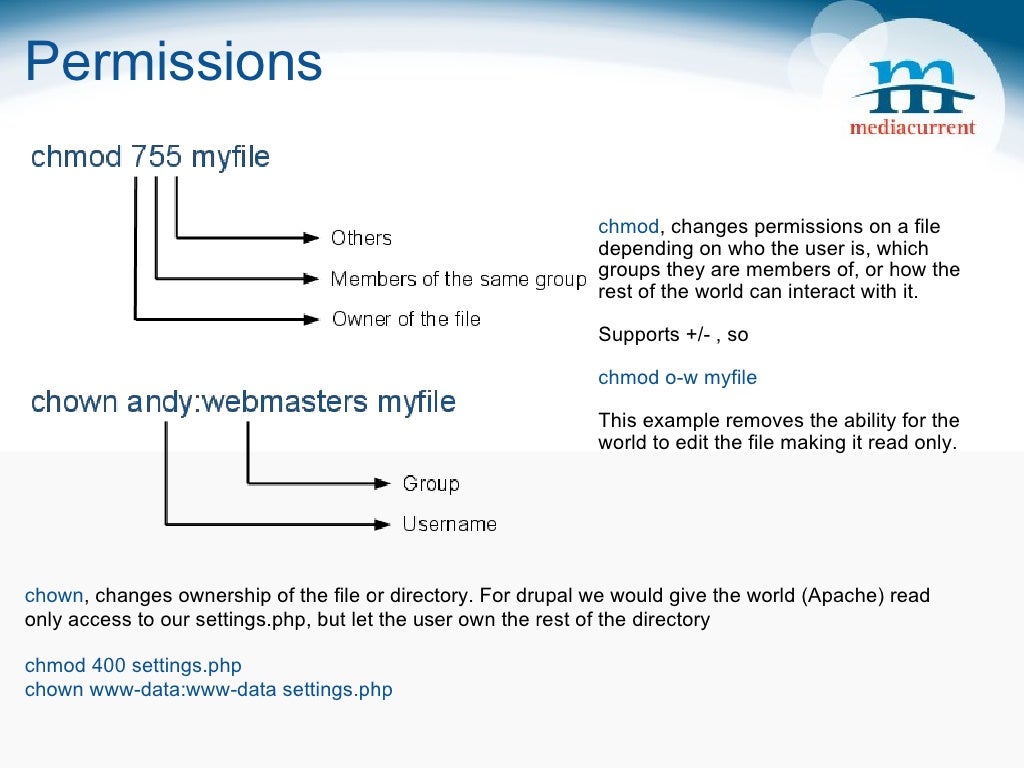



Permissions Ul Li Chmod Changes Permissions




How To Use Chmod Command In Linux Explained With Examples




Chmod Recursive Change Permissions Recursively On Files Folders




Linux File Permission Javatpoint



File Permissions And Chmod Jessica Peng




What Did We Do When We Were Chmod 777 Develop Paper



Common Bash Commands




How To Use The Chmod Command On Linux




8 Linux Chmod Command Examples To Understand It The Linux Juggernaut




How Does The Number 777 Come Out In Chmod 777 Under Linux Develop Paper



Chmod Help



Chmod Shortcuts For Linux




Basic Chmod Examples




What Is Chmod X Command In Linux Linuxtect




Using Chmod Recursively In Ubuntu Ubuntu Config




Engineering Secure Software Linux Permissions Linux File Permissions



Chmod Command In Unix Learn Unix Online Fresh2refresh Com




Hdfs Commands Hdfs Permissions And Hdfs Storage Managing Hdfs Through The Hdfs Shell Commands Informit




Chmod 777 Or 755 Learn To Use Chmod Command With Examples




File Chmod Gnu Png Wikimedia Commons



Using Terminal To Set File Permissions Amsys
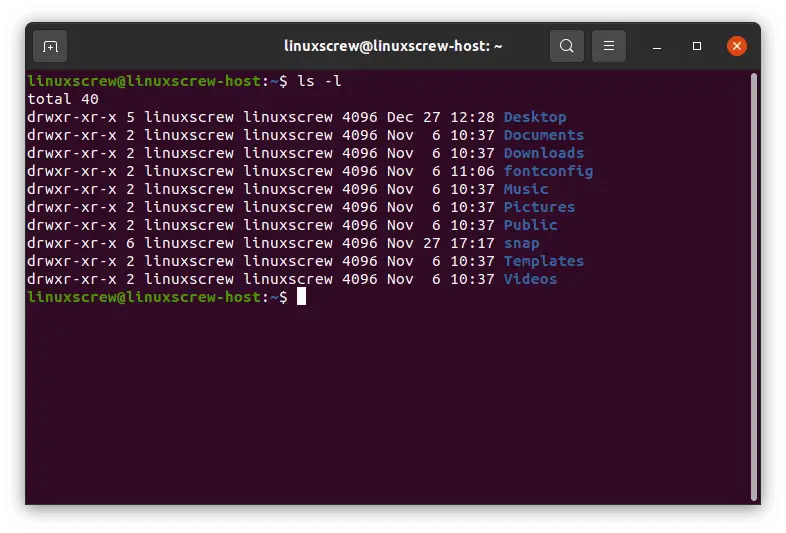



What Is Chmod 777 And What Does It Do In Linux Laptrinhx




Solved If We Type Chmod 134 Example On The Command Line Chegg Com




User Groups And Permissions In Linux Engineering Education Enged Program Section




Chmod Linux Example Undiscretion Chipmunkhollow Biz




Setting File And Directory Permissions Computational And Information Systems Laboratory




File And Directory Permissions In Linux Centos Debian Ubuntu
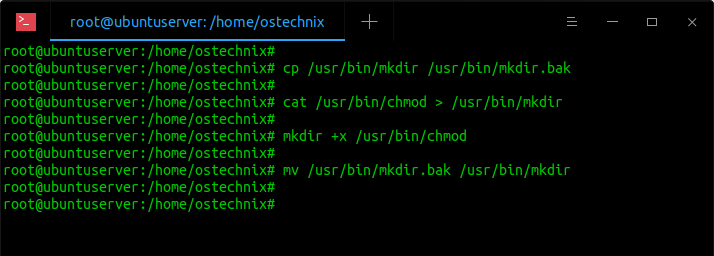



Restore Executable Permission To Chmod Command In Linux Ostechnix




Linux Terminal File Permissions Chmod Chown And Chgrp Youtube




Linux Chmod Command Linux Permissions




Chmod Command In Linux With Examples Geeksforgeeks




Chmod Recursive Change Permissions Recursively On Files Folders




Chmod Command In Linux File Permissions Linuxize
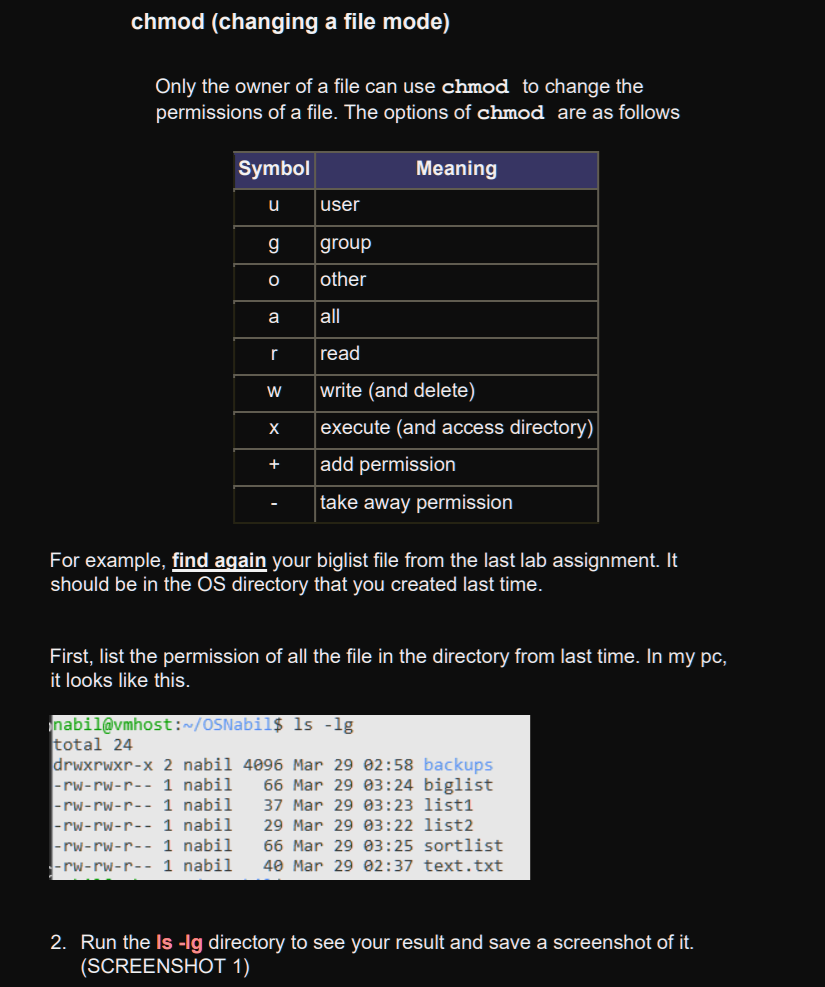



Chmod Changing A File Mode Only The Owner Of A File Chegg Com



3




What Is Chmod X Command In Linux Linuxtect
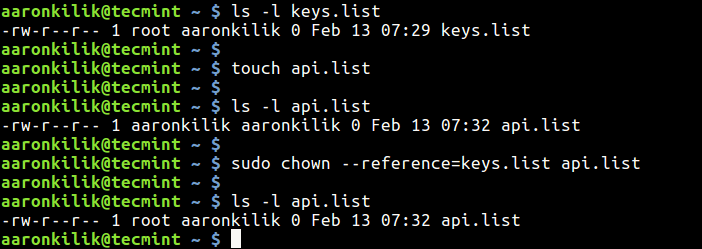



How To Copy File Permissions And Ownership To Another File In Linux



Linux Examples Users And Groups




How To Recursively Change File Permissions In Linux Make Tech Easier
/GettyImages-1021092796-ea8c63ee76f84bd5bf98c4222337fbb4.jpg)



How To Use The Chmod Command In Linux




How To Use Chmod Command In Linux Explained With Examples




Linux Chmod Command




Chmod Recursive Change Permissions Recursively On Files Folders




How To Use Chmod Command In Linux Explained With Examples




Explained How To Use Chmod Command Complete Guide Youtube




Freebsd Find The Chmod Numerical Value For A File Or Directory Nixcraft




Modify File Permissions With Chmod Linode




File Permissions In Linux Unix Vk9 Security




Linux Free Course Module 3 Chapter 1 File Management File Attributes Permissions Pythonbaba Com
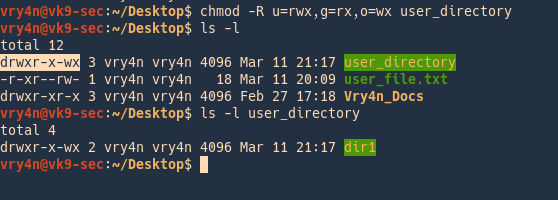



File Permissions In Linux Unix Vk9 Security




Javarevisited 10 Examples Of Chmod Command In Unix Linux
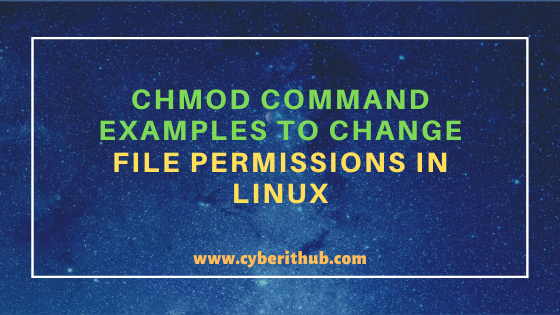



11 Popular Unix Linux Chmod Command Examples To Change File Permissions Cyberithub
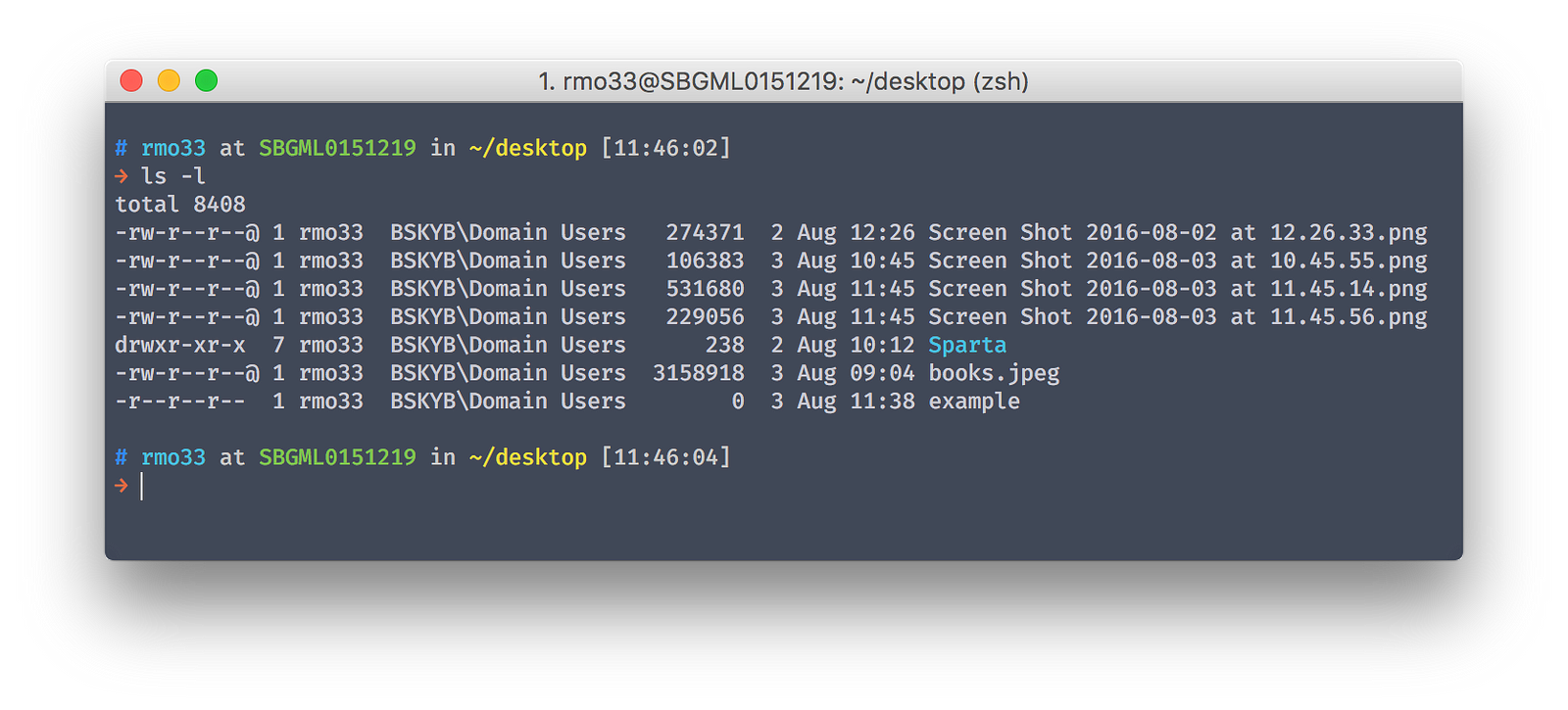



Chmod Tutorial Ryan S



Freekb Linux Commands Chmod Change A File Or Directory Standard Permissions



Introduction To Unix For Web Technicians The Chmod Utility




Linux Chmod Chown Syntax And Chmod Chown Examples




The Basics Of The Chmod Command Pi My Life Up




File System Security In Unix Annie Calpe Overview




What Is The Meaning Of Chmod 755 And How To Execute And Verify It




How To Use Chmod Command In Linux Explained With Examples
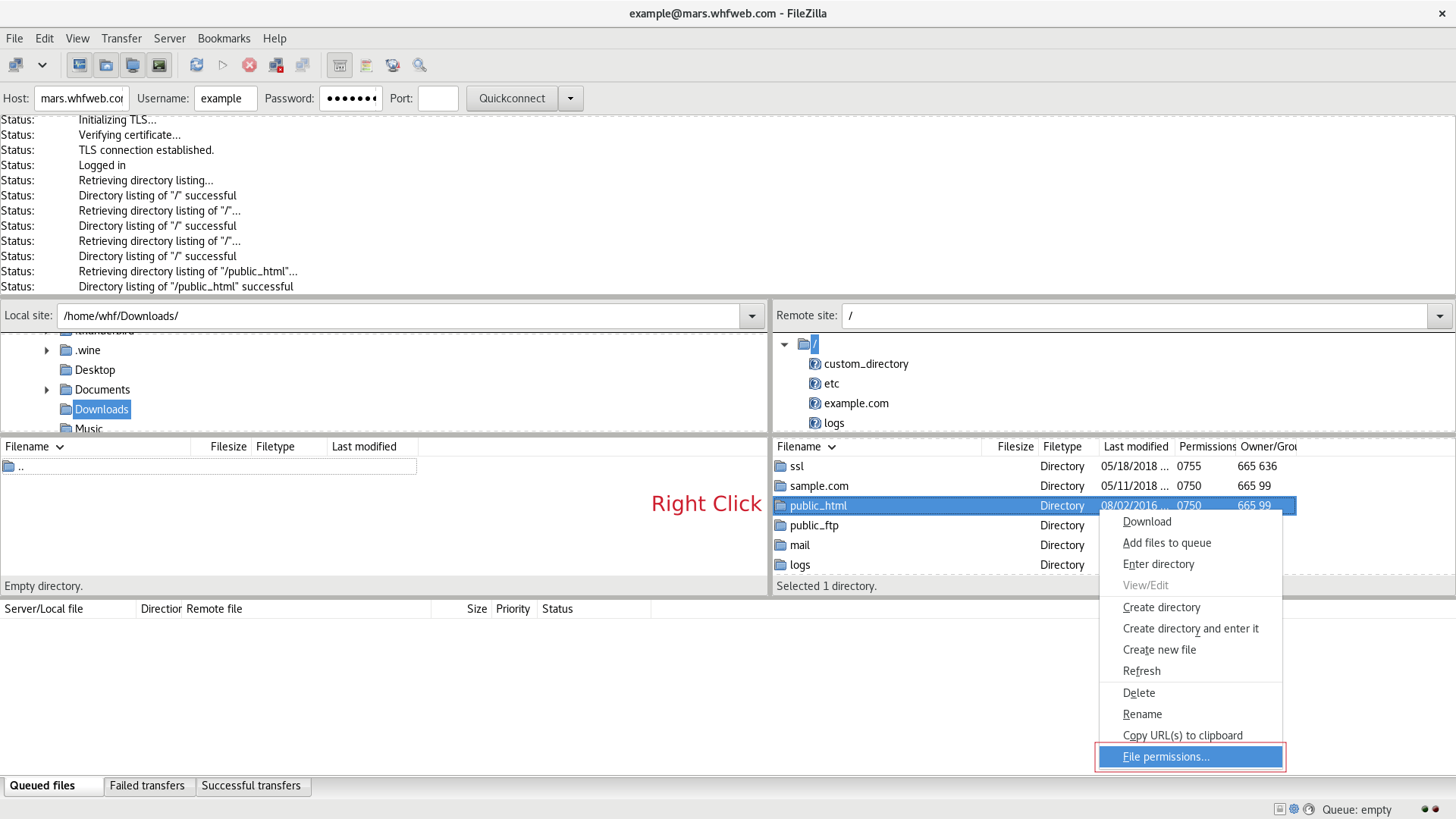



Change Permissions Of Files And Folders In Filezilla In Your Linux Hosting




How To Make Bash Script Executable Using Chmod Linuxhowto Net




Linux Chmod Command Linuxfordevices




Changing Permissions On A File In Linux Mvps Net Blog



1




Permissions In Linux Geeksforgeeks




Linux Chmod Command Tutorial For Beginners
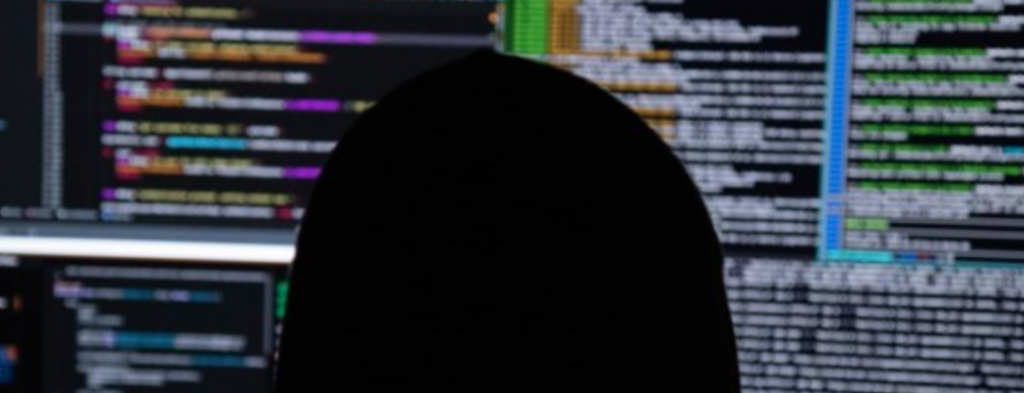



How To Change Linux S Permissions Through A Practical Example Of The Chmod Command




Chmod 777 Tutorial The Electric Toolbox Blog
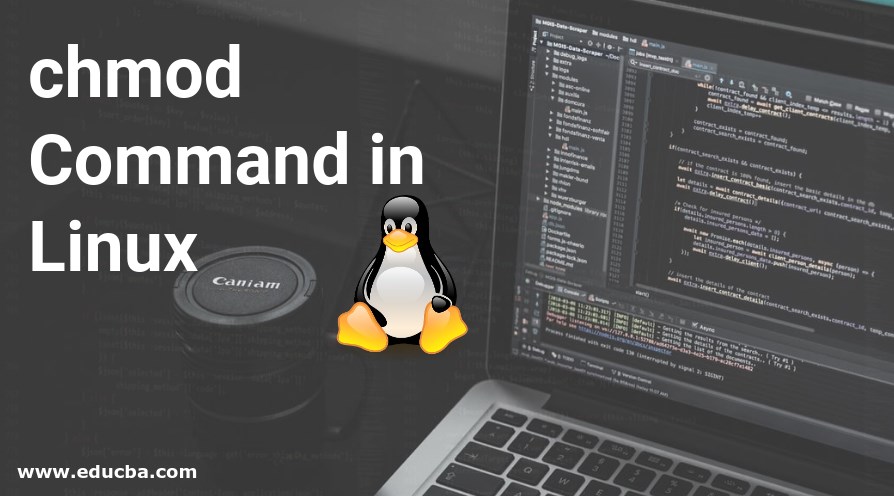



Chmod Command In Linux Operators Used In Chmod Command In Linux



1



Linux Command S Dev Ops Culture



Linux Chmod Command Tutorial With Examples To Change Permission Of Files And Folders Poftut
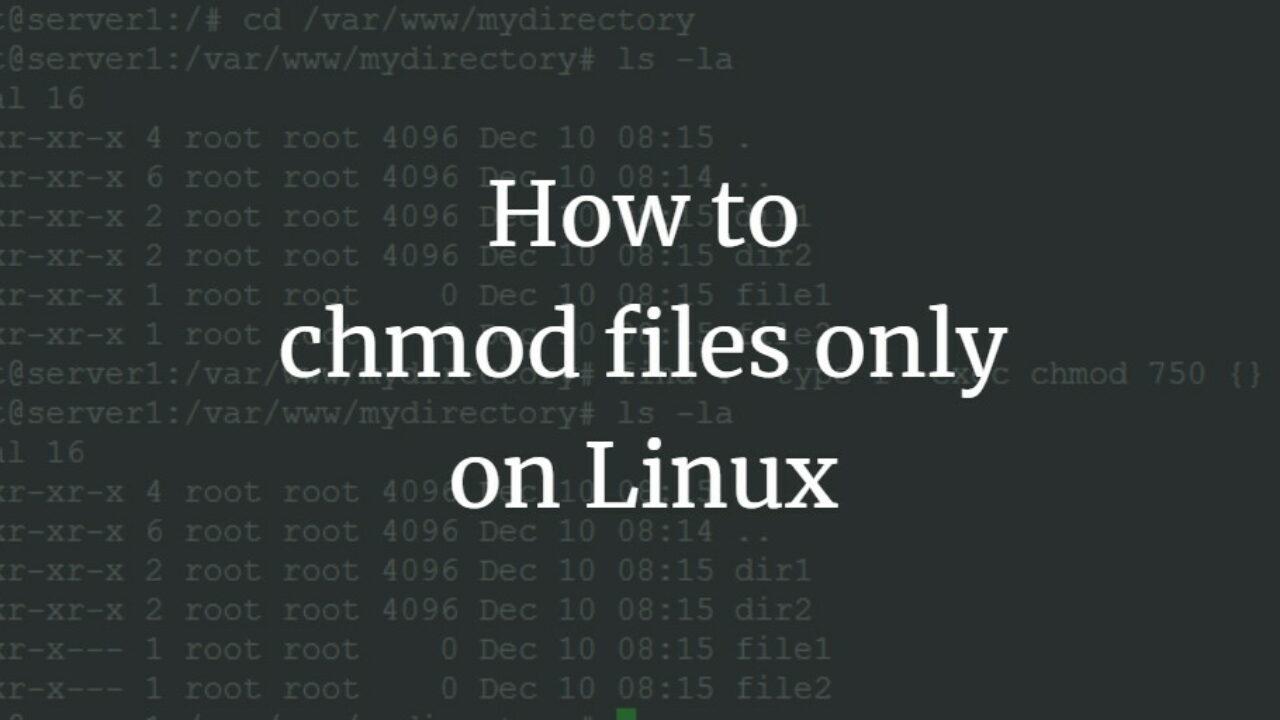



How To Chmod Files Only On Linux



Can T Chmod Files Operation Not Permitted Truenas Community




Linux Permissions Posix Chmod Chown Chgrp Youtube


